Preface
Contents
1 Introduction
1.1 Optimization
1.2 Types of Problems
1.3 Size of Problems
1.4 Iterative Algorithms and Convergence
Part I Linear Programming
2 Basic Properties of Linear Programs
2.1 Introduction
2.2 Examples of Linear Programming Problems
2.3 Basic Solutions
2.4 The Fundamental Theorem of Linear Programming
2.5 Relations to Convexity
2.6 Exercises
3 The Simplex Method
3.1 Pivots
3.2 Adjacent Extreme Points
3.3 Determining a Minimum Feasible Solution
3.4 Computational Procedure: Simplex Method
3.5 Finding a Basic Feasible Solution
3.6 Matrix Form of the Simplex Method
3.7 Simplex Method for Transportation Problems
3.8 Decomposition
3.9 Summary
3.10 Exercises
4 Duality and Complementarity
4.1 Dual Linear Programs
4.2 The Duality Theorem
4.3 Relations to the Simplex Procedure
4.4 Sensitivity and Complementary Slackness
4.5 Max Flow–Min Cut Theorem
4.6 The Dual Simplex Method
4.7 The Primal-Dual Algorithm
4.8 Summary
4.9 Exercises
5 Interior-Point Methods
5.1 Elements of Complexity Theory
5.2 The Simplex Method Is Not Polynomial-Time
5.3 The Ellipsoid Method
5.4 The Analytic Center
5.5 The Central Path
5.6 Solution Strategies
5.7 Termination and Initialization
5.8 Summary
5.9 Exercises
6 Conic Linear Programming
6.1 Convex Cones
6.2 Conic Linear Programming Problem
6.3 Farkas' Lemma for Conic Linear Programming
6.4 Conic Linear Programming Duality
6.5 Complementarity and Solution Rank of SDP
6.6 Interior-Point Algorithms for Conic Linear Programming
6.7 Summary
6.8 Exercises
Part II Unconstrained Problems
7 Basic Properties of Solutions and Algorithms
7.1 First-Order Necessary Conditions
7.2 Examples of Unconstrained Problems
7.3 Second-Order Conditions
7.4 Convex and Concave Functions
7.5 Minimization and Maximization of Convex Functions
7.6 Zero-Order Conditions
7.7 Global Convergence of Descent Algorithms
7.8 Speed of Convergence
7.9 Summary
7.10 Exercises
8 Basic Descent Methods
8.1 Line Search Algorithms
8.2 The Method of Steepest Descent
8.3 Applications of the Convergence Theory
8.4 Accelerated Steepest Descent
8.5 Newton's Method
8.6 Coordinate Descent Methods
8.7 Summary
8.8 Exercises
9 Conjugate Direction Methods
9.1 Conjugate Directions
9.2 Descent Properties of the Conjugate Direction Method
9.3 The Conjugate Gradient Method
9.4 The C–G Method as an Optimal Process
9.5 The Partial Conjugate Gradient Method
9.6 Extension to Nonquadratic Problems
9.7 Parallel Tangents
9.8 Exercises
10 Quasi-Newton Methods
10.1 Modified Newton Method
10.2 Construction of the Inverse
10.3 Davidon-Fletcher-Powell Method
10.4 The Broyden Family
10.5 Convergence Properties
10.6 Scaling
10.7 Memoryless Quasi-Newton Methods
10.8 Combination of Steepest Descent and Newton's Method
10.9 Summary
10.10 Exercises
Part III Constrained Minimization
11 Constrained Minimization Conditions
11.1 Constraints
11.2 Tangent Plane
11.3 First-Order Necessary Conditions (Equality Constraints)
11.4 Examples
11.5 Second-Order Conditions
11.6 Eigenvalues in Tangent Subspace
11.7 Sensitivity
11.8 Inequality Constraints
11.9 Zero-Order Conditions and Lagrangian Relaxation
11.10 Summary
11.11 Exercises
12 Primal Methods
12.1 Advantage of Primal Methods
12.2 Feasible Direction Methods
12.3 Active Set Methods
12.4 The Gradient Projection Method
12.5 Convergence Rate of the Gradient Projection Method
12.6 The Reduced Gradient Method
12.7 Convergence Rate of the Reduced Gradient Method
12.8 Variations
12.9 Summary
12.10 Exercises
13 Penalty and Barrier Methods
13.1 Penalty Methods
13.2 Barrier Methods
13.3 Properties of Penalty and Barrier Functions
13.4 Newton's Method and Penalty Functions
13.5 Conjugate Gradients and Penalty Methods
13.6 Normalization of Penalty Functions
13.7 Penalty Functions and Gradient Projection
13.8 Exact Penalty Functions
13.9 Summary
13.10 Exercises
14 Duality and Dual Methods
14.1 Global Duality
14.2 Local Duality
14.3 Canonical Convergence Rate of Dual Steepest Ascent
14.4 Separable Problems and Their Duals
14.5 Augmented Lagrangian
14.6 The Method of Multipliers
14.7 The Alternating Direction Method of Multipliers
14.8 Cutting Plane Methods
14.9 Exercises
15 Primal-Dual Methods
15.1 The Standard Problem
15.2 A Simple Merit Function
15.3 Basic Primal-Dual Methods
15.4 Modified Newton Methods
15.5 Descent Properties
15.6 Rate of Convergence
15.7 Primal-Dual Interior Point Methods
15.8 Summary
15.9 Exercises
A Mathematical Review
A.1 Sets
A.2 Matrix Notation
A.3 Spaces
A.4 Eigenvalues and Quadratic Forms
A.5 Topological Concepts
A.6 Functions
B Convex Sets
B.1 Basic Definitions
B.2 Hyperplanes and Polytopes
B.3 Separating and Supporting Hyperplanes
B.4 Extreme Points
C Gaussian Elimination
D Basic Network Concepts
D.1 Flows in Networks
D.2 Tree Procedure
D.3 Capacitated Networks
Bibliography
Index
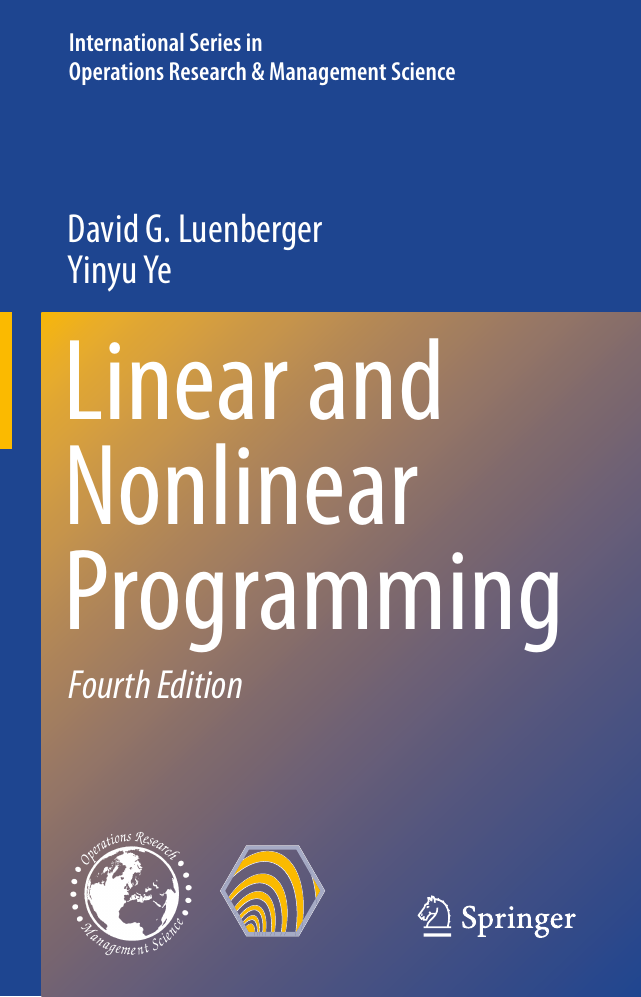
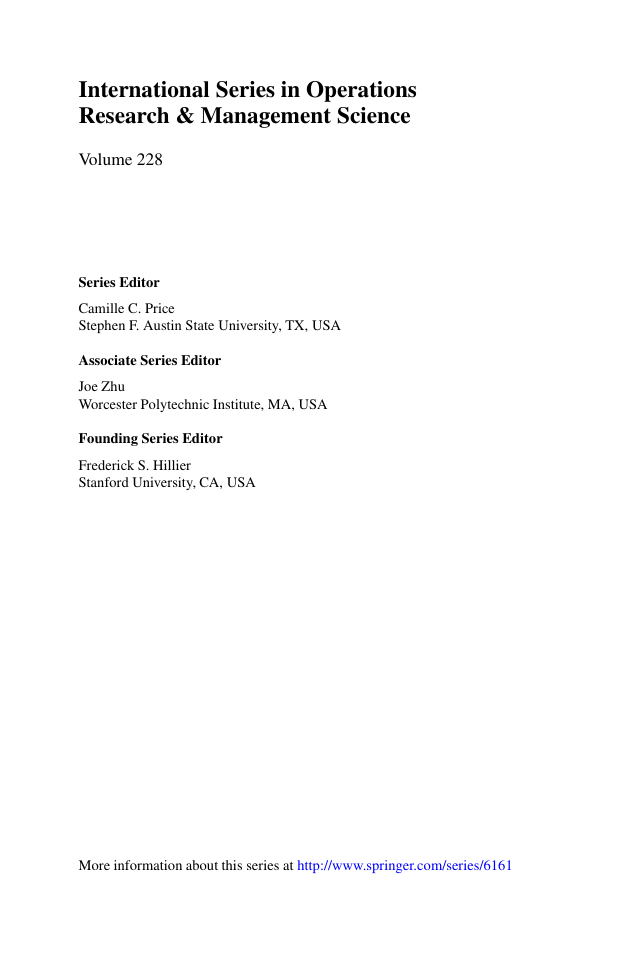

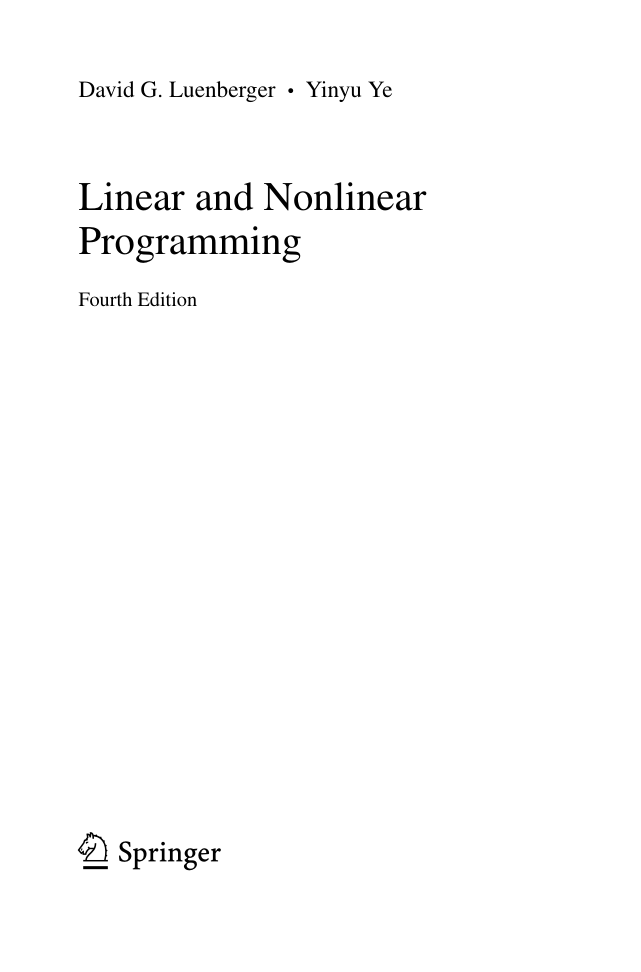
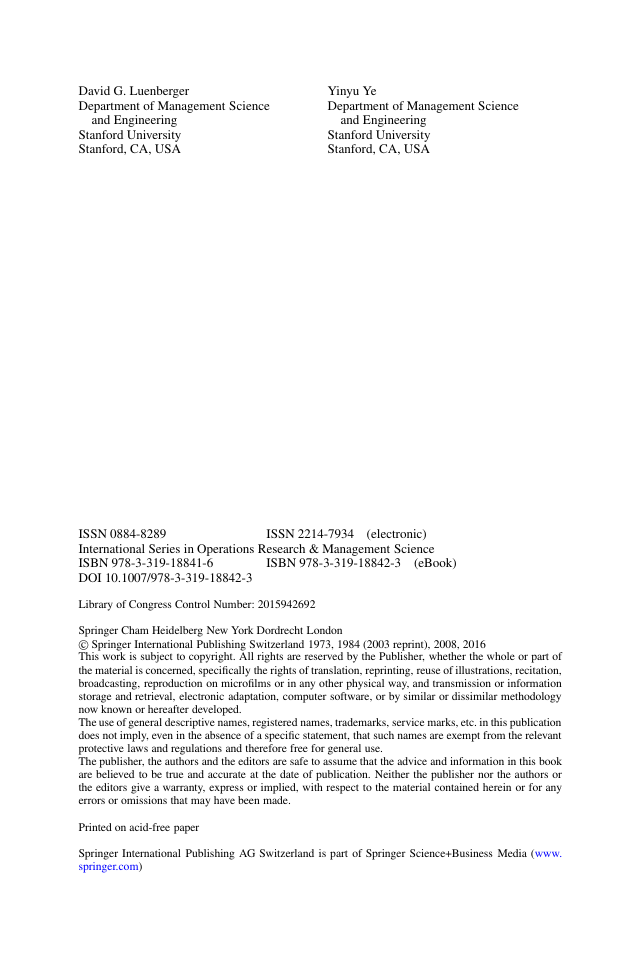


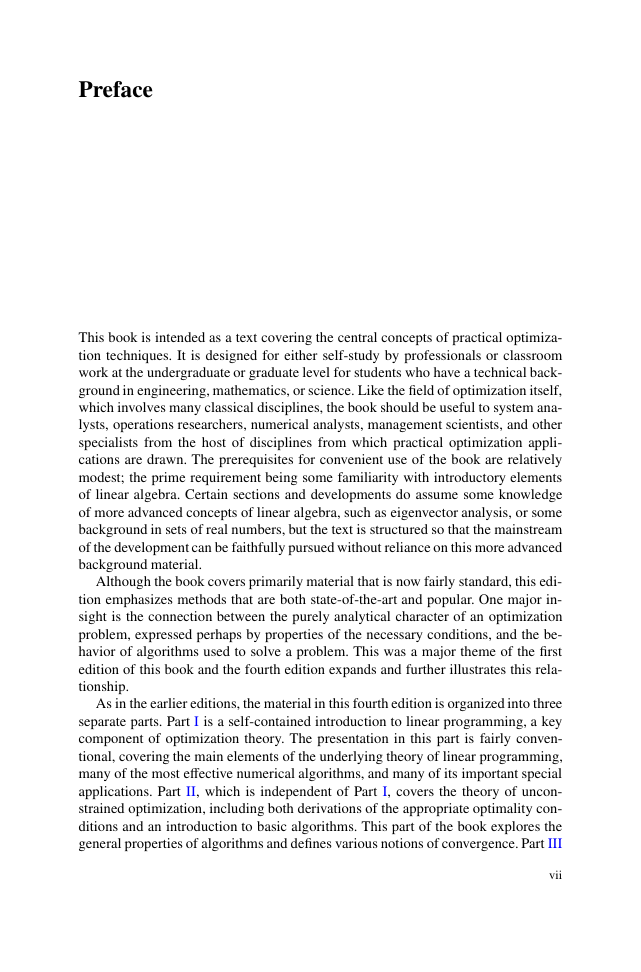








 2023年江西萍乡中考道德与法治真题及答案.doc
2023年江西萍乡中考道德与法治真题及答案.doc 2012年重庆南川中考生物真题及答案.doc
2012年重庆南川中考生物真题及答案.doc 2013年江西师范大学地理学综合及文艺理论基础考研真题.doc
2013年江西师范大学地理学综合及文艺理论基础考研真题.doc 2020年四川甘孜小升初语文真题及答案I卷.doc
2020年四川甘孜小升初语文真题及答案I卷.doc 2020年注册岩土工程师专业基础考试真题及答案.doc
2020年注册岩土工程师专业基础考试真题及答案.doc 2023-2024学年福建省厦门市九年级上学期数学月考试题及答案.doc
2023-2024学年福建省厦门市九年级上学期数学月考试题及答案.doc 2021-2022学年辽宁省沈阳市大东区九年级上学期语文期末试题及答案.doc
2021-2022学年辽宁省沈阳市大东区九年级上学期语文期末试题及答案.doc 2022-2023学年北京东城区初三第一学期物理期末试卷及答案.doc
2022-2023学年北京东城区初三第一学期物理期末试卷及答案.doc 2018上半年江西教师资格初中地理学科知识与教学能力真题及答案.doc
2018上半年江西教师资格初中地理学科知识与教学能力真题及答案.doc 2012年河北国家公务员申论考试真题及答案-省级.doc
2012年河北国家公务员申论考试真题及答案-省级.doc 2020-2021学年江苏省扬州市江都区邵樊片九年级上学期数学第一次质量检测试题及答案.doc
2020-2021学年江苏省扬州市江都区邵樊片九年级上学期数学第一次质量检测试题及答案.doc 2022下半年黑龙江教师资格证中学综合素质真题及答案.doc
2022下半年黑龙江教师资格证中学综合素质真题及答案.doc